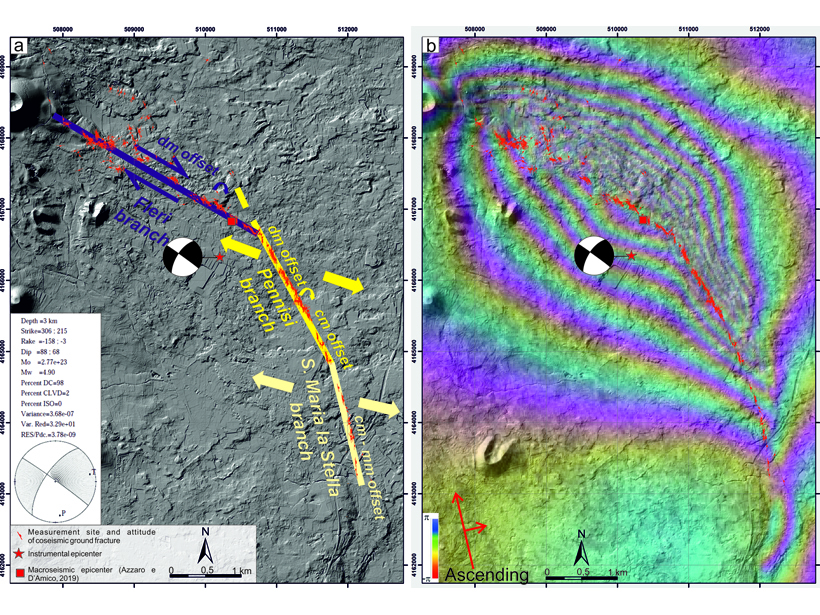Source: Tectonics
Volcanoes and earthquakes are intrinsically linked: both are outcomes of Earth’s dynamic plate tectonics. However, they are hard to study in unison. This is because they are often spatially separated by hundreds of kilometers, they are largely based in different types of science (earthquakes occur in the brittle crust; volcanoes are driven by melt), and approaches to monitoring them can be very different, since volcano science aims for predictions while earthquake science relies primarily on long-term forecasts.
When an earthquake occurs on a volcano, it is therefore often treated as a volcanic event – one not only triggered by volcano-related deformation, but also responding to the volcano and providing information about the volcano.
When a Mw 4.9 earthquake occurred on the eastern flank of Mount Etna, several papers promptly described how the earthquake indeed matched to a dyke intrusion. In contrast, Romagnoli et al. [2021] take a broader view. Their careful measurements of fault offset and interpretation of the tectonic setting led them to a different conclusion: while the event may have been triggered by the volcano, the deformation patterns are controlled by long-term tectonics. The geometry of the southeastern part of the rupture matches to a major tectonically active lineament that extends offshore, accommodating tectonic extension. To the northwest, approaching the volcano, the rupture splinters into a series of en echelon conjugate fractures; here, the slip patterns match the stress field of the broad Sicily collisional zone, which controls the deformation in this region.
Thus, long-term tectonics, rather than short-term volcanic deformation, seems to be responsible for both the geometry and the slip patterns in this event – although the volcano may have helped to trigger it.
This leaves room for further studies, as the authors point out: if earthquakes are telling us about regional tectonics rather than transient volcanic behavior, we may be able to use observations of past earthquake deformation to better understand the tectonics, and then leverage that understanding into a better forecast of future earthquakes.
Citation: Romagnoli, G., Pavano, F., Tortorici, G., & Catalano, S. [2021]. The 2018 Mount Etna earthquake (Mw 4.9): Depicting a natural model of a composite fault system from coseismic surface breaks. Tectonics, 40, e2020TC006286. https://doi.org/10.1029/2020TC006286
—Judith Hubbard, Associate Editor, Tectonics
Text © 2021. The authors. CC BY-NC-ND 3.0
Except where otherwise noted, images are subject to copyright. Any reuse without express permission from the copyright owner is prohibited.

